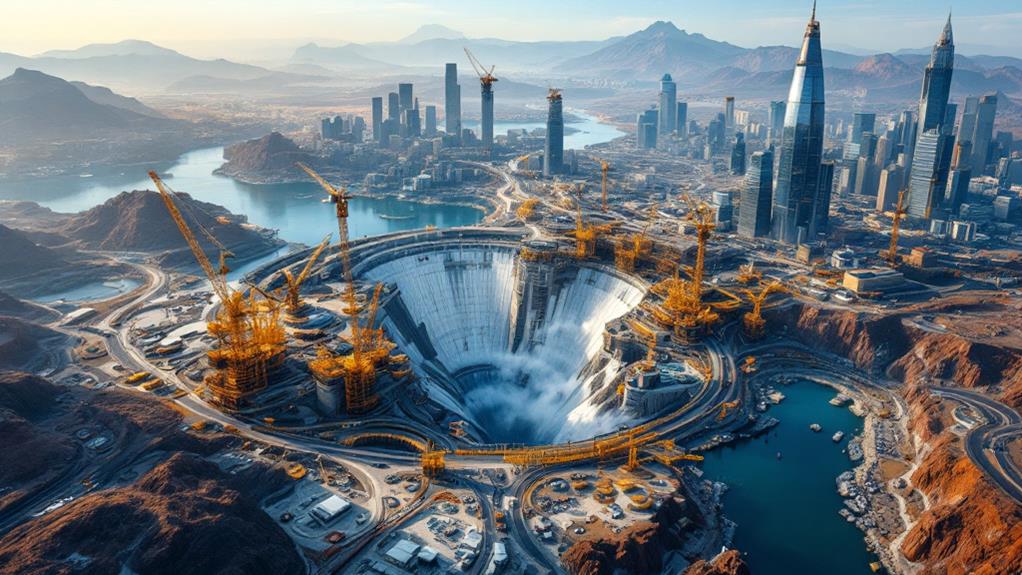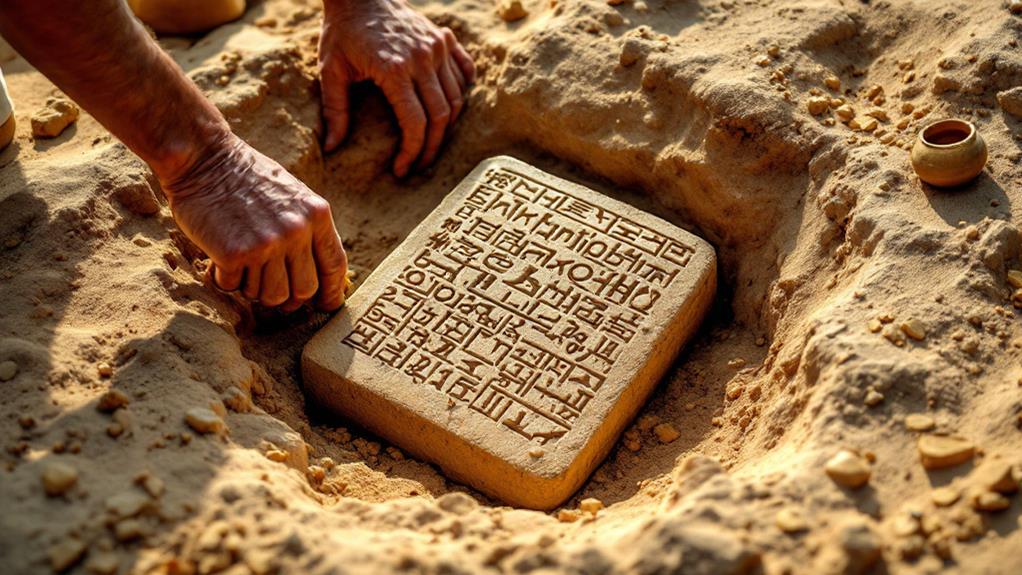How the Manhattan Project Changed the Course of History: The Birth of the Atomic Age
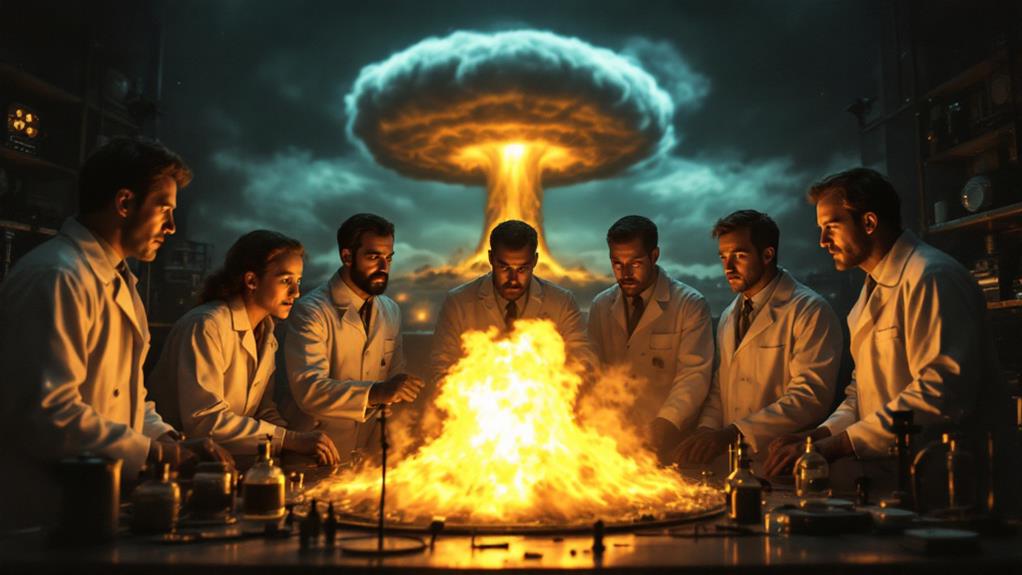
The Manhattan Project, a top-secret WWII initiative, revolutionized history by creating the atomic bomb. You'll explore how brilliant scientists like Oppenheimer and Fermi raced against Nazi Germany, overcoming immense technological challenges. The project culminated in the Trinity test and the bombings of Hiroshima and Nagasaki, ending WWII but releasing devastating power. It sparked ethical debates, reshaped global politics, and ushered in the atomic age. The legacy of the Manhattan Project continues to influence scientific advancements, environmental concerns, and societal fears. Examining this critical moment reveals how a single effort can alter the course of human civilization.
Origins of the Manhattan Project
Three key factors converged to spark the Manhattan Project in the early 1940s. First, wartime motivations drove the United States to seek a decisive advantage over its enemies. As World War II raged on, the fear that Nazi Germany might develop an atomic bomb first fueled the urgency to act.
Second, scientific discoveries in nuclear physics laid the groundwork for the project. Einstein's famous equation E=mc² and the identification of nuclear fission in 1938 revealed the potential for harnessing atomic energy. These breakthroughs opened up new possibilities for weaponry that could dramatically alter the course of the war.
Lastly, a group of influential scientists, including Leo Szilard and Albert Einstein, lobbied President Roosevelt to support atomic research. Their letter, sent in August 1939, warned of the potential German threat and urged the U.S. to take action.
You'll find that these factors combined to create the perfect storm for the birth of the Manhattan Project. The U.S. government, recognizing the high stakes, committed vast resources to this secret undertaking that would ultimately change the face of warfare and global politics forever.
Key Scientists and Their Contributions
The Manhattan Project's success hinged on the brilliance and dedication of numerous scientists. You'll find that many of these brilliant minds were immigrants who fled Europe due to the rise of Nazi Germany. J. Robert Oppenheimer, the project's scientific director, led the team at Los Alamos Laboratory. His leadership and theoretical proficiency were indispensable in developing the atomic bomb.
Enrico Fermi's nuclear research laid the groundwork for the project. He achieved the first controlled nuclear chain reaction in 1942, proving the feasibility of nuclear energy. Leo Szilard's work on neutron chain reactions was fundamental, as he conceived the idea of nuclear fission and collaborated with Einstein to alert President Roosevelt about its potential.
Other key contributors included Hans Bethe, who headed the theoretical division, and Richard Feynman, who solved critical implosion problems. Glenn Seaborg's recognition of plutonium provided an alternative fissile material. Edward Teller's work on thermonuclear reactions, though not directly used in the project, influenced future developments. These scientists, along with countless others, combined their skill sets to overcome immense challenges and usher in the atomic age.
The Race Against Nazi Germany
Underlying the Manhattan Project was an urgent race against Nazi Germany to develop the atomic bomb first. You might not realize how close this competition was. Nazi Germany's nuclear program, led by Werner Heisenberg, had begun in 1939, giving them a head start. This threat fueled the Allied powers' determination to outpace their adversaries.
The race intensified as both sides engaged in nuclear espionage efforts. You'd be surprised by the extent of these covert operations. The Allies infiltrated German research facilities, while the Nazis attempted to gather intelligence on American progress. This cat-and-mouse game of secrets and spies added another layer of tension to the already high-stakes competition.
As you can imagine, the fear of a Nazi atomic bomb drove the Manhattan Project to unparalleled levels of urgency and secrecy. Scientists and military personnel worked tirelessly, knowing that failure could mean a drastically different outcome for World War II. The race against Nazi Germany ultimately shaped the Manhattan Project's breakneck pace and unfaltering commitment to success, forever altering the course of history.
Technological Breakthroughs and Challenges
While the race against Nazi Germany provided motivation, the Manhattan Project faced immense scientific and engineering challenges. You'd be amazed at the sheer scale of problems scientists had to overcome. They needed to produce fissile material in quantities never before attempted, requiring the development of innovative materials and entirely new industrial processes.
Uranium enrichment proved particularly daunting. You'd have seen teams working on multiple methods simultaneously, including gaseous diffusion and electromagnetic separation. Each approach demanded state-of-the-art technology and precise engineering.
Computing advancements played a pivotal role, too. You'd find mechanical calculators and early electronic computers humming day and night, crunching numbers for complex calculations essential to bomb design.
The project also grappled with plutonium production and purification, a task that pushed the boundaries of chemistry and metallurgy. You'd witness scientists developing new techniques to handle this highly radioactive element safely.
Throughout it all, secrecy remained paramount. You'd see compartmentalization of information, with many workers unaware of the project's true nature. This security added another layer of complexity to an already monumental undertaking.
Trinity Test: The First Detonation
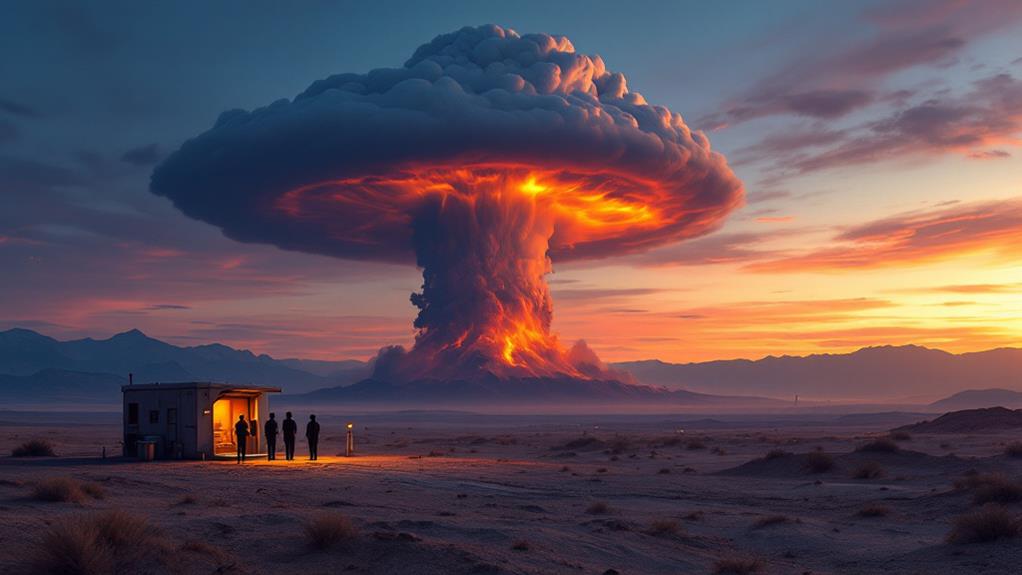
July 16, 1945 marked a turning point in human history. At 5:29 a.m., the world's first atomic bomb detonated in the New Mexico desert. The Trinity Test, as it was code-named, unleashed an explosive force equivalent to 20,000 tons of TNT.
You'd have witnessed a blinding flash, brighter than several suns, followed by a thunderous roar. The explosion created a mushroom cloud that rose 7.5 miles into the sky. As the dust settled, you'd have seen a half-mile-wide crater of radioactive glass where the desert sand once stood.
The yield results exceeded expectations, shocking even the scientists who'd created the bomb. Robert Oppenheimer, the project's director, famously quoted Hindu scripture: "Now I am become Death, the destroyer of worlds."
Scientific observations from the test provided vital data on the bomb's power and effects. Measurements of blast pressure, thermal radiation, and radioactive fallout helped refine future designs. The success of Trinity paved the way for the atomic bombings of Hiroshima and Nagasaki, ushering in the nuclear age and forever changing global politics.
Hiroshima and Nagasaki
The atomic bombings of Hiroshima and Nagasaki marked the devastating climax of World War II. On August 6, 1945, you'd have witnessed the U.S. drop the "Little Boy" bomb on Hiroshima, followed by "Fat Man" on Nagasaki three days later. These attacks released unparalleled destruction, instantly vaporizing thousands and leaving countless others to suffer from radiation poisoning.
The devastation caused was unmatched. Hiroshima's city center was obliterated, with buildings reduced to rubble and shadows of victims etched into walls. In Nagasaki, the bomb's blast leveled nearly half the city. The civilian casualties were staggering, with estimates ranging from 129,000 to 226,000 people killed.
You'd have seen the immediate impact and long-lasting effects of these bombings. Survivors, known as hibakusha, faced discrimination and health issues for decades. The attacks sparked intense debate about the ethics of using nuclear weapons and their role in ending the war. They also ushered in a transformed landscape of global politics, with the threat of nuclear warfare looming over international relations for years to come.
Ethical Dilemmas and Controversies
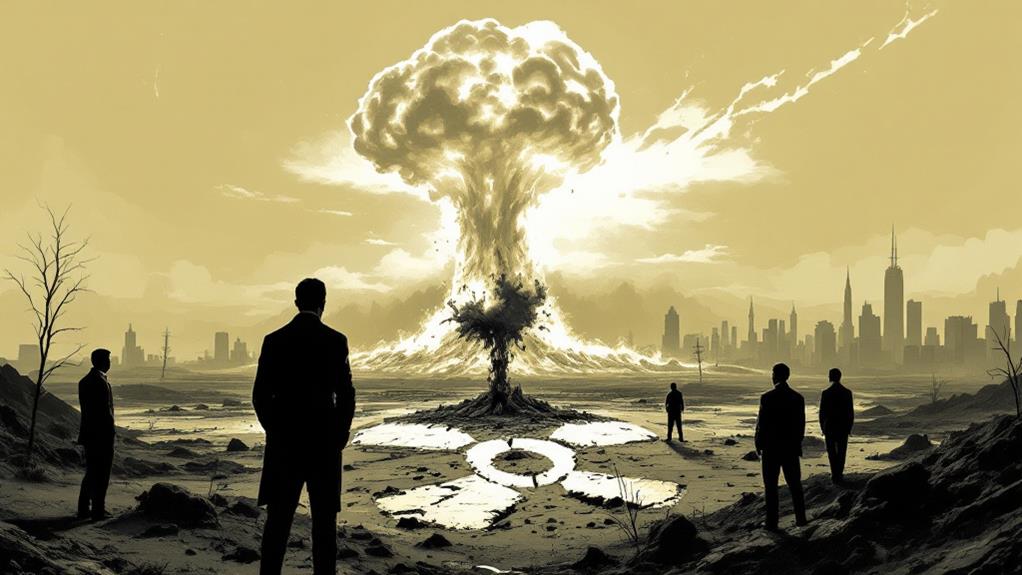
As the dust settled over Hiroshima and Nagasaki, you'd have seen intense debates emerge about the ethical implications of using atomic weapons. Scientists, politicians, and citizens grappled with the moral implications of this unparalleled destructive power. You'd have heard arguments for and against the bombings, with supporters claiming they shortened the war and saved lives, while critics condemned the mass civilian casualties.
The societal impacts of the atomic age were far-reaching. You'd have noticed a shift in global politics, as nations raced to develop their own nuclear arsenals. The threat of mutually assured destruction loomed over international relations, reshaping diplomacy and military strategy.
You'd have witnessed the scientific community wrestling with their role in creating such a devastating weapon. Many researchers, including some who worked on the Manhattan Project, advocated for nuclear disarmament and the peaceful use of atomic energy.
The ethical dilemmas surrounding nuclear weapons continue to this day. You're still faced with questions about their development, possession, and potential use, as the world struggles to balance security concerns with moral responsibilities.
Legacy of the Atomic Age
Consequences of the atomic age have echoed through history, shaping our world in significant ways. You've witnessed the lasting social impacts of nuclear technology, from the constant fear of nuclear war during the Cold War to the ongoing debates about nuclear energy. The threat of atomic weapons has influenced international relations, arms control treaties, and global power fluctuations for decades.
You've also seen the environmental consequences of nuclear technology. The testing and use of nuclear weapons have left radioactive contamination in various parts of the world, affecting ecosystems and human health. Nuclear accidents like Chernobyl and Fukushima have raised concerns about the safety of nuclear power plants and their potential long-term effects on the environment.
The atomic age has driven scientific and technological advancements in fields beyond weaponry, including medicine, energy production, and space exploration. You benefit from these developments in your daily life, from nuclear medicine in hospitals to the possibility of nuclear-powered spacecraft for future space missions. The legacy of the atomic age continues to shape your world, presenting both challenges and opportunities for the future.
